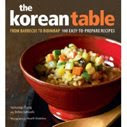Burlington's Elsa Tian is a lively lady of 70 and a superb, instinctive cook. Elsa and her husband, Jan, immigrated to the United States 38 years ago from Jakarta, Indonesia. Elsa loves to share her cooking with friends.
One day last month, she dropped off some of her wonderful peanut sauce, and over the next few weeks I was dipping into it to enhance all sorts of dishes.
"Americans like peanut butter, which is why Americans love this sauce so much," she said as she dipped a carrot into the thick paste. "It's a great base for many different types of food: chicken, tofu, noodles, vegetables, salads -- anything you like."
The secret to this sauce is freshly ground peanut butter, available at most supermarket deli counters and health food stores, where sometimes you can even grind your own.
"That way, there are no sweeteners or preservatives and you can sweeten and spice it up as you like," Elsa said.
The base has few ingredients and takes no more than 10 minutes to make. You enhance it depending on the type of food with which it will be paired. For salad dressings, thin it with water, plain yogurt, or coconut milk and spice it up with red pepper paste and vinegar. For grilled chicken, add depth with anchovy paste. For noodles and satays, infuse salty sweetness with soy sauce and brown sugar.
The sauce is cooked on top of the stove for a few minutes, and will keep for at least a month in a covered container in the refrigerator.
As Elsa prepared the sauce and added water to the thick peanut butter, she cautioned not to mix it too much: "The sauce thickens the more you stir it, so just mix until everything is blended."
While making the dressing for her signature dish, the gorgeous Indonesian mixed salad Gado Gado, she diluted several tablespoons of the peanut sauce with vinegar and a bit of water. In goes an eye-watering amount of red chili paste, sambal oelek, available in most supermarkets in the Asian food section or at Asian groceries.
"This is how most Indonesians like it," she said with a mischievous grin. Indeed! The tears surface immediately in a taste test. If you don't have hot pepper paste, Tabasco sauce is a reasonable substitute.
This is a great sauce to have on hand, like a basic black dress or a white button-down shirt in the closet. The recipes below give some ideas, but if a soup needs a little something, if your pasta is too plain, or if you find your stew lacking, dip in and spoon out a little magic.
Peanut sauce base 1/22/2004
2 teaspoons canola oil
1 clove garlic, minced
2 cups fresh peanut butter
1 cup water or coconut milk
1 tablespoon brown sugar
5 tablespoons white sugar
1 1/2 tablespoons whitecider vinegar or limejuice
1 teaspoon hot peppersauce or a few dashesof Tabasco sauce
1. In a saucepan, heat the oil and add the minced garlic. Stir and cook for about 30 seconds and turn off the heat.
2. Add the peanut butter, water or coconut milk, brown and white sugars, vinegar, and hot pepper sauce.
3. Turn on the heat to low-medium and stir until everything ismixed and just hot. Do not boil the sauce.
4. Cool the sauce and store in a covered container in the refrigerator for up to onemonth.
Fried shallots 1/22/2004
3 shallots, peeled and thinly sliced
1 tablespoon canola oil
1. Heat the oil and add the shallots.
2. Stir and cook on medium-low heat until the shallots get dark and crispy, about 10 minutes.
3. Drain on paper towels.
Chicken, beef, or pork satay 1/22/2004
3 tablespoons peanut sauce base
1 chopped tomato
1 teaspoon hot sauce
1 tablespoon soy sauce
1 tablespoon brown sugar
1 pound boneless chicken, pork, or beef (sirloin or flank) cut into one-inch cubes (about 20 cubes)
Bamboo skewers soaked inwater for 30 minutes
1. Mix cut-up meat with marinade. Refrigerate 30 minutes to 1 hour.
2. Place several pieces of marinated meat on soaked bamboo skewers (wrap exposed end of skewer in aluminum foil).
3. Grill on a barbecue or under the oven broiler for 3 minutes per side.
4. Serve with dipping sauce (see accompanying recipe).
FOR THE DIPPING SAUCE
4 tablespoons peanut sauce base
1 heaping tablespoon brown sugar
2 tablespoons soy sauce
Hot pepper paste to taste
2 to 3 teaspoons lime juice(key limes if you can get them)
1. Mix all ingredients together to a dipping consistency. Makes 1/2 cup.
2. Dipping sauce can be thinned with a few tablespoons of water, coconut milk, or yogurt.
Gado Gado Indonesian salad 1/22/2004
This is humble fare in Indonesia, often sold by street vendors. Serve as a first course or as a meal with a bowl of white rice. Most of the vegetables are blanched to maintain their color and crunch. Serves 6 to 8
1/2 pound green beans, tips removed and cut into 2-inch pieces
10 to 16 ounces spinach leaves (bags of baby spinach make this a breeze)
2 cups bean sprouts
2 carrots, julienned
4 potatoes, cooked and sliced
1/4 cabbage, core removed
4 eggs, hardboiled and cut into sixths
1/2 seedless cucumber cut into 1/4-inch slices
Fried shallots (see accompanying recipe)
1. In a large pot of boiling water, blanch the green beans, spinach, bean sprouts, carrots, and cabbage individually for two or three minutes. Remove each vegetable with a slotted spoon, dip into cold water, and drain thoroughly.
2. On a large platter, arrange the vegetables in layers, starting with the cabbage at the bottom. Spread out and group vegetables in an attractive pattern.
3. Sprinkle on fried shallots.
4. Serve with peanut sauce dressing
Gado Gado dressing
1/2 cup peanut sauce base
1 to 2 teaspoons hot sauce
2 tablespoons vinegar
4 to 5 tablespoons water or coconut milk
1 tablespoon sugar
1 teaspoon salt
1 to 2 teaspoons anchovypaste (optional)
1. Place the peanut sauce base in a bowl. Add the remaining ingredients and mix slowly until blended. Adjust seasonings to your taste. The consistency is like that ofa salad dressing. Try not to over-mix.
Vegetable dip 1/22/2004
Makes 1/2 cup.
3 tablespoons peanut sauce base
1/2 cup plain yogurt (full or lowfat)
1. Mix and serve with fresh vegetables.



